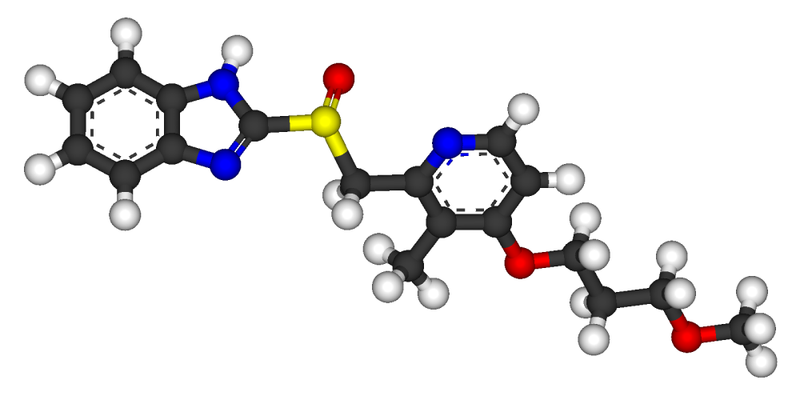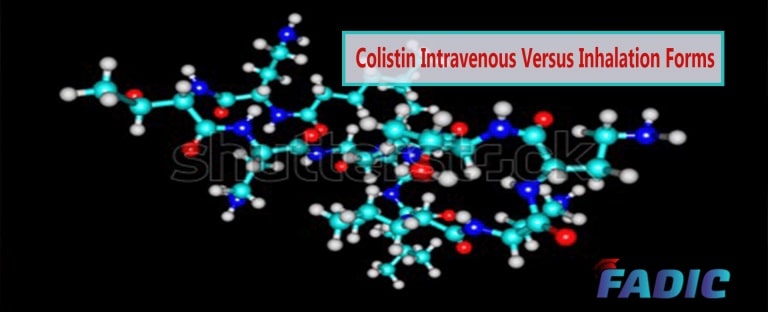Colistin Between Nebulizer and Intravenous Forms
Colistin Between Nebulizer and Intravenous Forms
- Colistin, or polymyxin E, is a bactericidal drug that disrupts the outer cell membrane of gram-negative rods. In addition to, primarily used for infections with Pseudomonas Aeruginosa and Acinetobacter baumannii.
- It can beinhaled via nebulizerand has been used in certain settings, including adjunctive therapy to intravenous antibiotics for nosocomial pneumonia, Moreover, this is due to multidrug-resistant organisms.
- It used in the management of patients with cystic fibrosis. However, the role of inhaled colistin in the management of gram-negative pneumonia is controversial.

Recent Studies
- This is controversial is due to some studies show no extra benefit and no difference in clinical outcomes. It shows no differences in mortality or intensive care unit length of stay and had an increased rate of bronchospasm.
- In spite, a subsequent case-control study comparing inhaled to intravenous plus inhaled colistin showed greater clinical cure rates in the combined therapy group (69 versus 55 percent).
- In addition to fewer days of mechanical ventilation given these conflicting reports and lack of prospective randomized trials. We do not routinely use inhaled colistin for gram-negative pneumonia.
- However, it may be a useful adjunctive therapy in select multidrug-resistant cases. There is the concern that its use may select for resistance to it in organisms that are already widely resistant to other agents.
- If used as a nebulized inhalation, you should mix it immediately prior to administration.

What is the dose of Colistin?
- The inhaled form depends on which product used. For example, Colistin Inhalation: 75mg in 3ml NS via nebulizer twice daily Delivery of aerosolized form not standardized.
About FDA approval
- Colistimethate is FDA approved only for injection into a vein or a muscle. Not FDA approved for use as a liquid to be inhaled via a nebulizer.
- There is FDA Warning about using Colistin in Nebulizer Solution because of the possible connection between the use of a liquid solution of Colistimethate. If premixed for inhalation with a nebulizer and the death of a patient.
- Because after mixing with sterile water and a buffer, Colistimethate undergoes spontaneous hydrolysis to the bioactive form colistin.
- A component of colistin, polymyxin E1, is toxic to lung tissue. Premixing Ccolistimethate into an aqueous solution and storing it for longer than 24 hours. It results in increased concentrations of colistin in solution, increasing the potential for lung toxicity.
Important Suggestion from John Hopkin
- Although inhaled Colistimethate used, often as last resort treatment method. There is a warning against delayed pharmacy compounding.
- Since this may lead to the conversion of Colistimethate sodium to the biologically active colistin which in turn can lead to airway inflammation. In addition to reactive airways and ARDS if inhaled.
- The authors from John Hopkin suggests that if the drug used by the inhalation route. Therefore, the reconstitution should be just prior to administration.
To Conclude:
- Colistin not used routinely by inhalation. In addition to, used for gram-negative pneumonia. Although it may be a useful adjunctive therapy in select multidrug-resistant cases.
- If used, done with caution and mixed IMMEDIATELY PRIOR to administration. As the drug breakdown products can cause direct damage to lung tissue, leading to potentially serious and life-threatening side effects.
Related Courses
- Antimicrobial Stewardship Fellowship Program
- Antimicrobial Stewardship Program in Acute Care Setting
- Patient Education and Counseling Program
- ABC of Bacteria Course
Related Mini Courses /One-day Workshop:
- Goals of Antimicrobial Stewardship
- Respiratory Tract Infection: How to Apply Antimicrobial Stewardship?
- Practical Guide for Antimicrobial Stewardship Committee
- Antimicrobials Pharmacokinetic & Pharmacodynamic
- Clostridioides Difficile Infection (CDI) Prevention Program
- Acute Bacterial Skin and Skin Structure Infections
- Sepsis Training Program
- Antifungal Stewardship: Implementation Guide
- Antibiogram Best Use & Interpretation
- Urinalysis Tract Infection: Role of Antimicrobial Stewardship
- Surgical Prophylaxis Antimicrobial Stewardship
Related Books:
- Pocket Guide for Antibiotic Pharmacotherapy
- Antibiotic Cards
- FADIC Outpatient Parenteral Antimicrobial Therapy (OPAT)
- كتيب فادك للتوعية بمخاطر سوء الاستخدام للمضادات الحيوية
Keep Learning From FADIC Blog:
- Candidate Success Story – FADIC Antimicrobial Stewardship Program
- Antimicrobial Stewardship in Surgical Prophylaxis
- Hospital Antibiogram Role in Antimicrobial Stewardship
- Antimicrobial Stewardship Strategies
- Colistin Between Nebulizer and Intravenous Forms
- إرشادات المضادات الحيوية – لا تساوم البكتيريا تقاوم
- المضادات الحيوية الأكثر شيوعاً واستخداما في الوصفات الطبية
- المضادات الحيوية

 Log in
Log in Sign up
Sign up